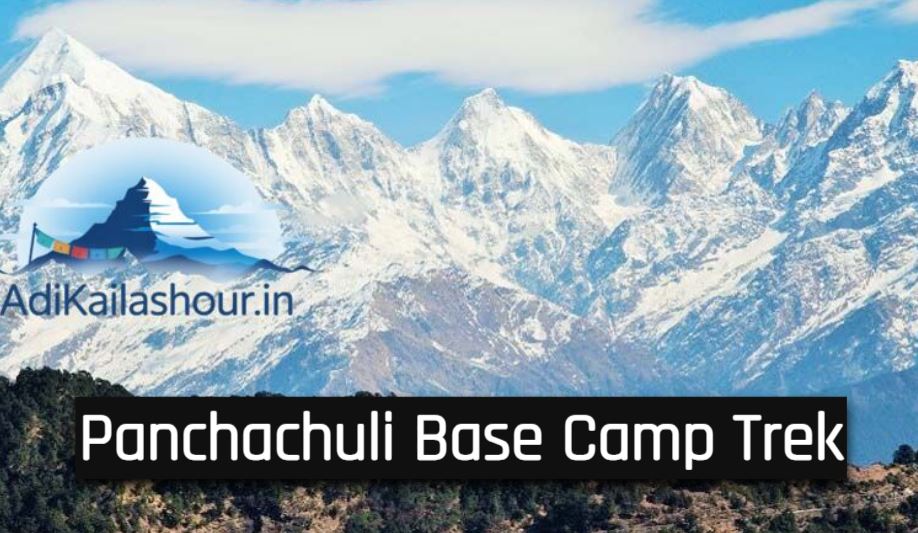The Panchachuli Base Camp Trek is a spectacular journey located in the Darma Valley of Kumaon Himalayas, Uttarakhand, India. Known for the breathtaking views of the five towering Panchachuli peaks, the trek effortlessly blends natural beauty, cultural heritage, and adventure. This detailed guide provides comprehensive information about how to reach Panchachuli Base Camp, the trek itself, itinerary, cultural highlights, and practical tips for preparation.
About Panchachuli Peaks and Base Camp
The Panchachuli range, named after the five sacred peaks that resemble five cooking hearth stones (Chuli), rises majestically up to 6,904 meters (22,651 feet) at its highest peak, Panchachuli II. These peaks are sacred in Hindu mythology and visible in full glory from Panchachuli Base Camp, which sits perched around 4,260 meters (14,000 feet). The region forms part of the less explored Darma Valley, which is home to diverse flora, fauna, and unique cultural groups like the Rang and Darma tribes.
How to Reach Panchachuli Base Camp
Step 1: Reach Delhi or Nearby Major Cities
The pilgrimage begins from major cities like Delhi or Dehradun. Tourists can take trains, flights, or buses to reach Kathgodam or Haldwani, which are major entry points to Kumaon.
Step 2: Kathgodam to Dharchula by Road
From Kathgodam or Haldwani, travelers travel about 290 kilometers to reach Dharchula, located near the Nepal border. The road journey is scenic but long, taking around 9 to 12 hours, winding through Himachali and Kumaoni towns and hilly terrains. Dharchula acts as the gateway town for the Panchachuli Base Camp Trek.
Step 3: Dharchula to Dar Village
From Dharchula, the route leads to Dar Village by jeep or shared taxis by road, covering approximately 45 kilometers. The 2- to 3-hour drive traverses stunning mountain landscapes, crossing several small tribal villages and rivers. Dar Village is the designated starting point for the trek, where visitors can also experience the local culture.
Panchachuli Base Camp Trek Route
The trek from Dar to Panchachuli Base Camp covers approximately 40 kilometers one way and usually takes 6 to 7 days when done at a moderate pace. The trail weaves through dense forests, alpine meadows, riverbanks, and remote tribal settlements.
Major Villages and Stops on the Trek
- Nagling: The first major village after Dar, featuring simple homestays and local markets.
- Baaling: Known for its panoramic views and opportunity to interact with locals.
- Duktu: A scenic village surrounded by verdant meadows and towering peaks.
- Sela: Offers trekking rest stops and a chance to explore local flora.
- Bungling: Close to the base camp, this village leads into alpine and glacial terrain.
- Panchachuli Base Camp: The end of the trek, offering spectacular panoramic vistas of the five peaks.
Trekking Highlights
- Scenic Beauty: The entire trek is filled with stunning views of the Panchachuli peaks, glacier moraines, and surrounding Himalayan ranges.
- Wildlife: The Darma Valley ecosystem hosts Himalayan wildlife such as musk deer, snow leopards, and various bird species.
- Flora: Rhododendron forests, pine and birch trees, and colorful wildflowers enhance the trekking experience.
- Culture: The tribes in the villages provide insight into ancient Himalayan lifestyles, crafts, and customs.
Difficulty and Preparation
The Panchachuli Base Camp Trek is considered moderate in difficulty but demands good physical fitness and acclimatization due to altitude and terrain. Trekkers should prepare with stamina building exercises, practice short hikes, and arrange proper gear including trekking shoes, warm clothing, rain protection, and first aid.
Daily trekking distances and elevation changes vary but average about 6-8 kilometers per day. During the trek, accommodation options include homestays, guesthouses, and camping, allowing for a comfortable and authentic Himalayan experience.
Best Time to Visit
The ideal trekking months are May to June and September to early November. During these times, the weather is generally stable with clear skies and moderate temperatures, perfect for trekking and enjoying panoramic views. Monsoon season is avoided due to high rainfall and risk of landslides, while winters bring heavy snowfall, making trekking difficult.
Essential Permits and Regulations
While Panchachuli Base Camp lies in a sensitive border region near Nepal and Tibet, domestic tourists only need to secure restricted area permits from local government offices in Dharchula or Pithoragarh. International tourists should consult with authorized tour operators for special permits and travel arrangements due to restricted border zone policies.
Itinerary Sample
- Day 1: Arrival in Dharchula, preparation, and local sightseeing.
- Day 2: Drive from Dharchula to Dar Village, acclimatization and rest.
- Day 3: Trek from Dar to Nagling (8 km).
- Day 4: Trek from Nagling to Baaling (7 km).
- Day 5: Trek from Baaling to Duktu (7 km).
- Day 6: Trek from Duktu to Panchachuli Base Camp via Bungling (9-10 km).
- Day 7: Return trek to Dar via reverse route or alternative trails.
- Day 8: Drive from Dar to Dharchula and onward to exit destinations.
Tips for a Successful Trek
- Start early each day to avoid afternoon rain and cloud cover.
- Carry enough water and energy snacks for trekking days.
- Respect local culture and environment by minimizing waste and following guidelines.
- Hire experienced local guides to enhance safety and learn about the region.
- Prepare for sudden weather changes with waterproof gear and warm clothing.
Conclusion
The Panchachuli Base Camp Trek offers one of the most scenic and culturally enriching Himalayan trekking experiences in India. With its majestic peaks, vibrant tribal culture, and immersive nature, the trek is ideal for adventure seekers and spiritual travelers alike. Proper preparation, respect for the local environment, and an appreciation of the unique Himalayan way of life make this journey unforgettable.

